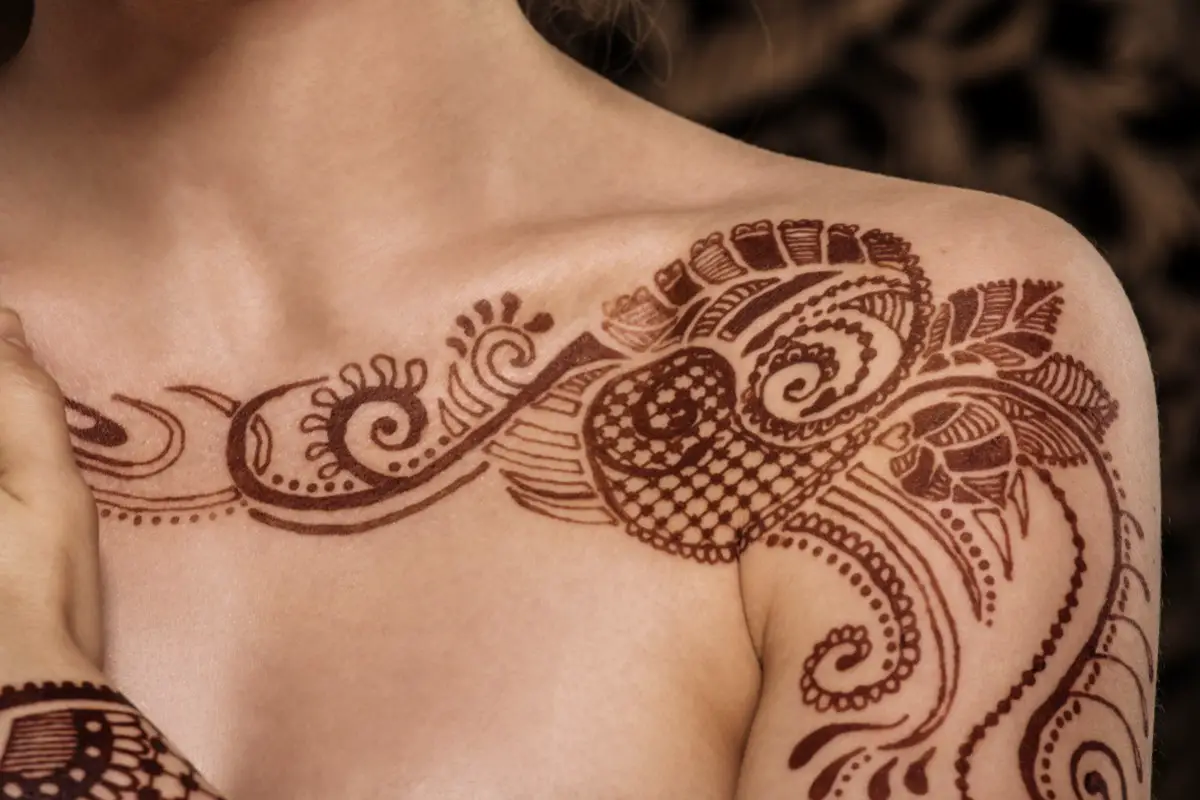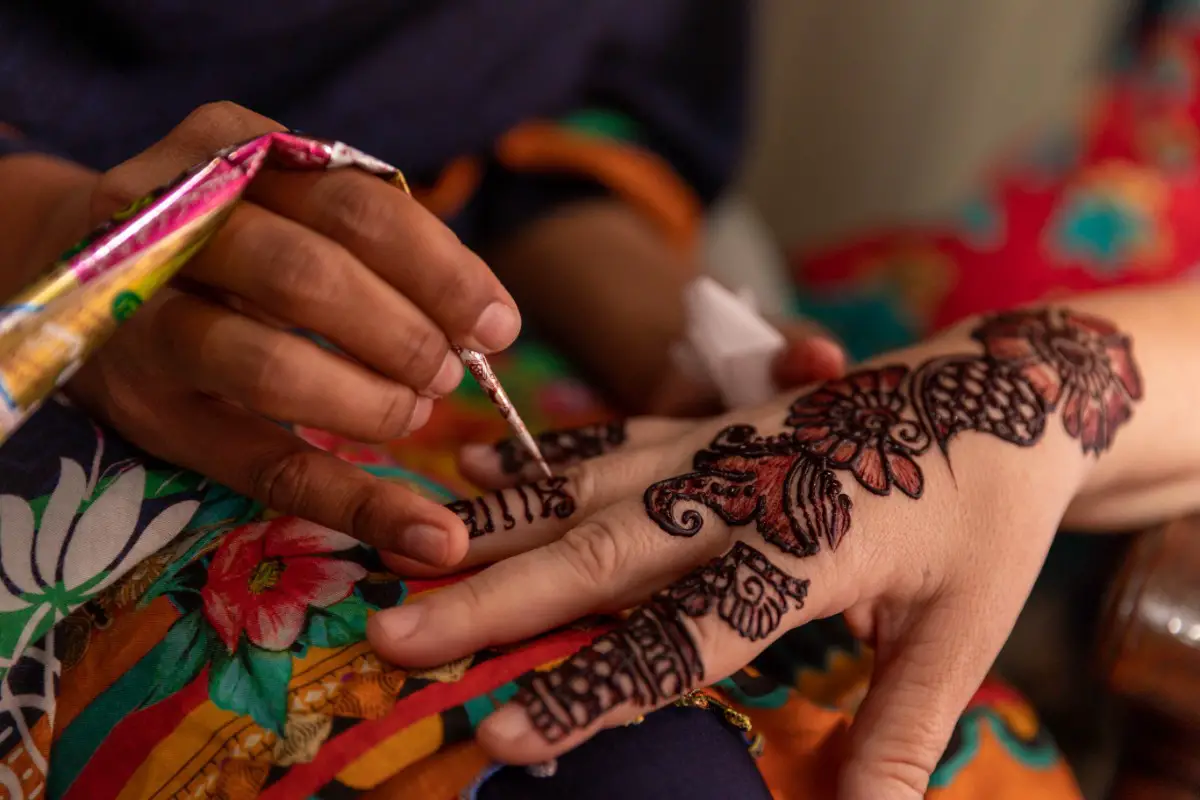From Instagram to fashion magazines, it seems like henna is everywhere these days and you may want to dip your toe into the trend. Since henna is associated with specific cultures, though, would it be considered a form of cultural appropriation if you did?
Here is what you need to know about how henna fits into various cultures and whether using it is a form of cultural appropriation:
Is Henna Considered Cultural Appropriation?
Using henna on your body or getting a henna ‘tattoo’ isn’t a form of cultural appropriation as it is seen more as a process of adornment – however, you do need to be careful of the kind of designs or patterns that you get using henna.
Why is Using Henna Not Considered Cultural Appropriation?
Yes, henna is primarily used by Indian, Pakistani, African and Egyptian cultures. However, it was first used as a cooling agent.
When henna is applied to the body, it causes the skin to cool and to provide temporary relief. Due to this, people in hot climates and desert areas used to liberally apply it to the palms of their hands and soles of their feet.

This has been going on for over 5000 years!
People noticed that when henna was applied to the body and then left for some time before being washed off, it created a stain. It was then used for decorative purposes.
Eventually, henna – also known as mehendi – was incorporated into important celebrations such as engagements and weddings.
As a result, most people see henna, itself, as a dye. As the dye is not linked to any one culture or religion, using henna on your body is not considered a form of cultural appropriation.
When is Using Henna Considered a Form of Cultural Appropriation?
Well, this has to do with the patterns themselves.
As mentioned, one of the most important times for the application of henna is before a woman gets married. This is a rather common tradition in both India and Pakistan.
The application of mehendi is quite meaningful here. The patterns have cultural significance. It is also customary to hide the future groom’s name among the design.
The groom then must find his name on his bride’s hands once they are married. Sometimes this is done in public, after the main ceremony while in other instances it is done in private to establish intimacy between the married couple.
It is also believed that the deeper the color of the mehendi once the paste is washed away, the deeper your husband’s love for you. And, a long lasting design is meant to depict a long lasting marriage.
If you happen to get such a pattern or take patterns that are typically associated with South Asian, African, or Middle Eastern countries, then this would be considered cultural appropriation.
Keep in mind that although you may think that these patterns are pretty, they don’t have quite the same meaning or power to you. Therefore, to use them in such a manner can seem like you are trivializing what the henna patterns mean to other people.
Is It Always Cultural Appropriation to Wear These Patterns?
This depends on the circumstances. Now, with mehendi parties, it isn’t always just the bride that gets these patterns.
The other women present at the party may also have designs drawn on them. If you are attending one of these parties and are having the patterns drawn on you, then it isn’t considered cultural appropriation.
This is because you have been given consent to have such patterns drawn on you from people who are a part of that culture.
If a friend belonging to an Indian, Pakistani, African, or Middle Eastern culture wants to draw designs for you or simply practice on you, then this isn’t considered cultural appropriation either.
What Henna Designs are Appropriate?
As mentioned, henna itself isn’t considered culturally significant. Due to this, you can use henna to draw a wide variety of temporary tattoos or images on your body.
This can include names, symbols, etc. For instance, stars, hearts, flowers, are just a few examples of what is appropriate to get inked on your body.
You can even get repeating patterns on your body. Just make sure that these aren’t linked to a particular culture or custom to avoid offending anybody.
Understanding the Difference Between Appreciation and Appropriation
Henna is a beautiful way to decorate your body and as it is becoming more and more mainstream, it can be difficult to stay away from using it to draw patterns.
After all, if you appreciate the symbolism behind henna designs, isn’t it appreciation rather than appropriation?

If you make the effort to do your research and learn about henna designs and what they mean to certain cultures, then this can be considered appreciation of a culture.
At the same time, you do need to be aware of your own position. The reason that there is a fine line between appreciation and appropriation is because of who is doing the appreciating.
If you belong to a social or ethnic group that has historically played a role in either dehumanizing or minimalizing other people’s roles in society, then it can be considered appropriation.
This is true even if you have the right intentions behind adopting certain aspects of the culture. Keep in mind, even if you haven’t been directly responsible for marginalizing a group, it doesn’t mean that you can adopt certain aspects of your culture.
This is because of how it can make people who are a part of that marginalized culture feel. If those individuals have been actively bullied in the past for wearing mehendi and then see you now adopting these designs, it is only natural for them to feel resentful.
How to Use Henna Appropriately?
You may want to start off by doing some research into traditional henna or mehendi designs. This will give you an idea of which designs or patterns to steer clear of.
Educating yourself on these designs may provide you with greater insight into their meaning as well and help you to understand why certain patterns may not be appropriate for people outside of a certain culture.
If possible, speak to someone who is a part of Indian, Pakistani, African, or Middle Eastern culture to get their take on their chosen design. Just keep in mind that not everyone will have the same reaction when it comes to cultural appropriation.
And, if you have been given the green light regarding a certain pattern, make sure to respect it. Don’t just see it as an accessory but as an important link to someone’s culture.
You should also be careful of how you post things on social media. Avoid adding any captions or hashtags that may allude to the fact that you are using the henna in any cultural capacity as this can upset a lot of people.
As long as you make an effort to steer clear of designs that may be associated with a certain culture, you should be able to use henna without any issue at all.
Is Henna a Form of Cultural Appropriation?
Henna, by itself, is a type of dye and due to this, the use of henna isn’t associated with a particular culture – using henna isn’t cultural appropriation but you should be aware of the patterns or designs that you use as these can be offensive to certain individuals.
The Importance of Educating Yourself on Henna Designs
When it comes to using henna in a culturally appropriate way education is key.
It is important to take the time to learn about the specific meanings and cultural significance behind different henna designs before getting them done.
By understanding the history and symbolism associated with these designs you can ensure that you are using henna as a form of appreciation rather than appropriation.
This knowledge will also help you avoid designs that may be offensive or disrespectful to certain cultures.
Remember henna is not just a trendy accessory or temporary body art – it is a traditional art form that holds deep meaning and importance to the cultures that have practiced it for centuries.
By educating yourself you can show respect and honor the beauty of this tradition.

